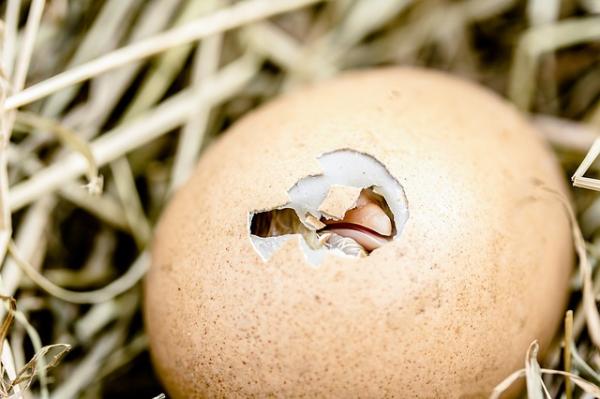Consider the classics of elementary school science, watching tadpoles magically change into frogs and often, at this time of year, the hatching of baby chicks. Those denied these pleasures can find a variety of birds hatching across the Internet. So here is the question, how do those chicks peck their way out of those shells? After all, those eggshells are made from the same material as our bones, and it certainly is hard enough to withstand the pecking of a baby chick.
Researchers at McGill provide some great insight into answering that question, an act of nature that once out of 5th or 6th grade we consider a given fact of life. As usual, the answer is more complicated than we might initially assume.
The study
Shells serve as a protective layer, their mechanical properties combining hardness with just enough elasticity not to be brittle are a result of a mixture of mineral and organic components in the ‘extracellular matrix’ – the area outside and surrounding cells. These combined structures of calcium carbonate and proteins have evolved over time and can provide insights into how to structure biomaterials as well as other structures.
95% of the eggshell of a chicken is calcium carbonate, 3.5% organic components. A previously identified protein, osteopontin (OPN), appears to have a critical role in the development of the eggshells structure. OPN is highly negatively charged, all the better to interact and bond with calcium. It guides calcium’s crystallization forming the lattice structure that provides a shell’s strength.
Eggshells have three layers, an outer, vertical crystal layer, a middle central palisade layer and an inner mammillary layer. Using a variety of imaging techniques, the authors report on the structure of the crystalline subunits, the nanostructures forming the eggshell.
- Moving from the outside inward, the size of the nanostructure unit grew larger, with the greatest increases in size throughout the sublayers of the middle layer, the central palisade which constitutes the bulk of the eggshell.
- OPN is most abundant on the shells outer surface, found in steadily declining amounts as we move inwards. OPN’s role appears to modulates their dimensions. The size of the units correlates with hardness, smaller units on the outside give the shell’s outer layer its strength.
- The inclusion of OPN within these lattices create some mal-alignment, they are not as regular as the calcium carbonate crystals formed in a beaker. This produces a less regular lattice that while providing strength is less brittle, more elastic.
The authors believe that “the interplay between organics and mineral precursors likely influences mineralization events” creating the differing structures found in different layers of the eggshell. The characteristics of hardness and elasticity are a result of these varying nanostructures.
The researchers investigated the hardness of the layers finding that the progression in the size of the nanostructures resulted in greater hardness. Makes sense, the hardness confers the shell’s protective nature. But this progression in size and hardness is not found in the eggshell’s innermost layer. In this layer, the large nanostructures instead provide a greater surface area for dissolution of calcium, which in turn is taken up by the chicken embryo to form bone.
To escape, the chicks first peck into the small air sac on the flatter side of the inner egg to get a bit more oxygen to breathe. Then they get to work; pecking away on the eggshells inner layer, where the dissolution of the calcium reduces the hardness, facilitating the ability of the chick using its egg tooth [1], to break free of its shell prison.
Nanostructures and long bone fractures
The researchers make two intriguing point in describing these structure and functional changes that may have implications for understanding the mechanism of long bone fracture. First, a lattice made solely of calcium is strong, but brittle. Second, the presence of “organics’ like OPN within the shell matrix cause the propagation of cracks to be less harmful as they follow the path of least resistance, along the “softer” organics, leaving more strength providing lattice intact. We might say that the organics within the shell matrix, and by extension into our bony matrix provides some resilience to the cracks that form in bones from routine bear and tear. The temporal sequence, small cracks that result in little damage gradually accumulate in time until there is a sudden catastrophic failure is the same mechanism postulated as to explain bone fatigue; an underlying cause of hip fractures in the elderly - a source of great disability and even death. The work of these researchers on how eggshells and by extension bone develops its strength suggests that merely restoring calcium without concern for the changes in the much smaller organic components of our bony matrix will turn out to be inadequate therapy.
Scientific curiosity is a beautiful thing, the hatching of chicks has much to teach us about both their shells and our bones.
Source: Nanostructure, osteopontin, and mechanical properties of calcitic avian eggshell Science Advances
[1] The egg tooth is a sharp point to the chick’s beak that aids in breaking through the shell and then is lost.




